What’s your favorite type of computer game? If you’re a typical gamer of the 2010s you may have replied CRPGs (computer role-playing games) like Skyrim or The Witcher, or their massively multiplayer online counterparts like World of Warcraft or Star Wars: The Old Republic. If you like your action faster and more furious, maybe you’re partial to first-person shooters, like Halo or Call of Duty. Or if you lean more toward thoughtful, turn-based exercises in strategy, you might have replied 4X (“eXplore, eXpand, eXploit and eXterminate”) games a la Sid Meier’s Civilization series. And if you don’t have much time for gaming but need a quick bit of relaxation during your downtime, you might have put in a vote for casual games like Bejeweled or Candy Crush.
But if you’re a long-time gamer, one who’s been playing for 20 years, 30 years, or even more, you might just have said … adventure games.
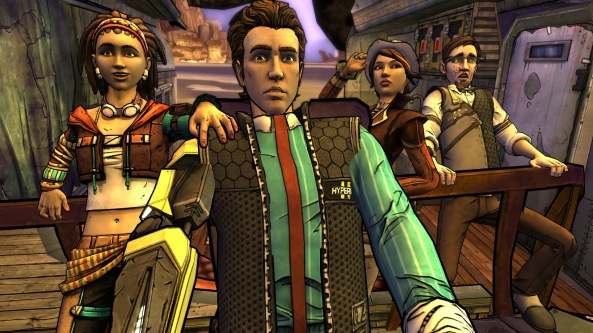
Telltale Game’s Tales from the Borderlands: What adventure games look like in 2015.
Adventure games have gone through many permutations over the last 40 years. They’ve fallen in and out of fashion, they’ve gone through multiple visual and gameplay styles, and there have been periods when they’ve nearly disappeared altogether. But after four decades, they’re still here. And it’s possible they’re more popular than ever.
In the early to mid 1970s, when microcomputers were still barely a blip on the computer hobbyist horizon, mainframe programmer and part-time spelunker Will Crowther logged on to a DEC PDP-10 and used his FORTRAN skills to write a computer game called, simply, Adventure. It was set in a huge cave not unlike Mammoth Cave in Kentucky, which Crowther had explored. He wrote the game in part so that his daughters could play it and in part to indulge his love for Dungeons & Dragons. By all reports Crowther’s version was fairly rudimentary compared to later versions, but it caught on and spread from computer system to computer system. In 1976, a Stanford University graduate student named Don Woods expanded Adventure with Crowther’s permission into what became known as The Colossal Cave Adventure. Although it was too large to be played on most microcomputers of the period, it was widely available on mainframe and minicomputer systems. Here’s what it looked like running on a DEC PDP-10:
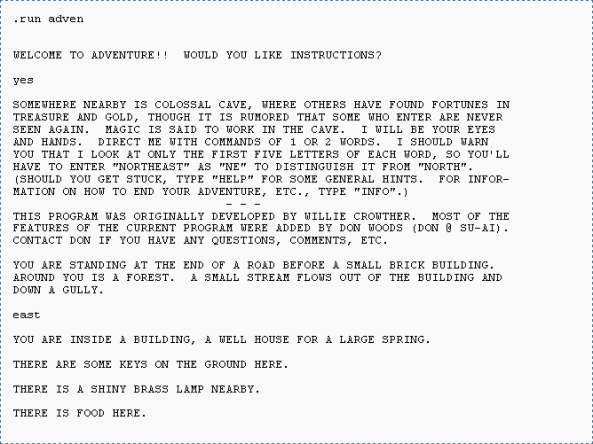
Colossal Cave Adventure: All those words add up to a lot of game.
The Colossal Cave Adventure looks deceptively simple — you type in one- or two-word commands to move around in and interact with a world described purely through text — yet it created a remarkably large, surprisingly open world and went on to become one of the most influential computer games ever written. It spawned a long line of imitations that continues to this day, though you might not recognize most of its descendants based on the text screen reproduced above. If you’ve never played the Colossal Cave Adventure and you’re curious what it was like, here’s a simulation sponsored by the AMC-TV show Halt and Catch Fire.
The original Crowther and Woods version wouldn’t have run on microcomputers in the late 1970s because early personal computers weren’t powerful enough; they didn’t have enough internal memory and they mostly lacked disk drives. However, in 1978, a young Wisconsin programmer named Scott Adams (no relation to the creator of Dilbert) set out to prove that something very much like the Colossal Cave Adventure could be written on a Radio Shack TRS-80 Model I, a popular home computer of the day, and that he could do it in 16-kilobytes of memory. Yes, that’s not 16 gigabytes or even 16 megabytes — that’s 16 kilobytes of memory, where a kilobyte is 1,024 memory locations, each of which can store a single number in the range 0 to 255. To give you a sense for how much memory that is, the text in this blog post takes up about one and half kilobytes, but that picture at the beginning probably uses more memory than Scott Adams’ TRS-80 had in total.
Amazingly, Adams succeeded, writing a game called Adventureland that neatly mimicked the Colossal Cave Adventure without copying it and it ran, as planned, on a 16-kilobyte TRS-80. Adventureland was successful enough in the early gaming marketplace that Adams was able to spin off his own company, Adventure International, and market an entire line of adventure games for several different models of computer. Although no longer for sale commercially, you can still download playable versions from Scott Adams’ own website or play them directly on your browser using the links he supplies at that address.
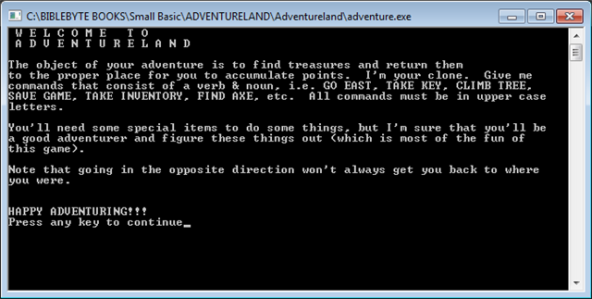
Adventureland: Still text, but no PDP-10 required.
Like the Colossal Cave Adventure, the play mechanics of the Scott Adams adventures were simple. You typed in one or two word commands, like “look” (to get a description of what was visible from your current position in the game’s world), “west” (to go in that direction) or “get sword” (to pick up any swords that you may conveniently have stumbled upon).
Even while Scott Adams was marketing his first adventure games, a small group of programmers at MIT consisting of Tim Anderson, Marc Blank, Bruce Daniels, and Dave Lebling were creating their own, far more ambitious variation on the Colossal Cave Adventure. They called it Zork.
That name may or may not ring a bell. If it does, you probably just experienced a pleasant flash of nostalgia. Zork was witty, quite huge by the standards of late 70s games and had something that neither the Colossal Cave Adventure or Adventureland had: a parser that could read English language sentences and respond to commands longer than one or two words. Admittedly, it still couldn’t understand English as it’s normally spoken between human beings, but if you knew how to construct a command properly — say, “Pick up the gold sword on the wooden desk” — Zork wouldn’t get confused. Zork was the next step in the evolution of text adventures.
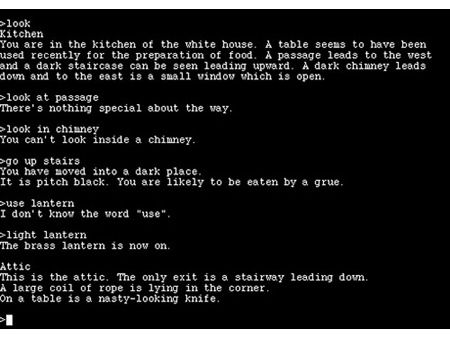
The first Zork game. Be careful. You might get eaten by a grue!
The microcomputers of the late 70s weren’t ready for Zork, but by the early 80s they were and the Zork programmers, following in Scott Adams’ footsteps, created their own publishing house to publish Zork and the sophisticated series of text adventures that would follow. They called that publishing house Infocom.
Like the word Zork itself, the name Infocom sends shivers down the spines of old-time gamers. Infocom was one of the greatest game publishers of the 1980s, perhaps of all time, and they produced adventure game after adventure game, every one of them just as sophisticated as Zork had been and some of them even more so. I’ve written elsewhere about my love for their mystery game Deadline, which I still consider one of the most magical experiences of early 1980s computer gaming, but Infocom spent most of the 80s turning out one classic text adventure after another: more Zork games, Planetfall, Starcross, Suspended, Hitchhiker’s Guide to the Galaxy, Leather Goddesses of Phobos and others.
Yet even as text adventures were increasing in sophistication, so were the graphics capabilities of microcomputers. In 1980, a young programmer named Roberta Williams, became obsessed with the Colossal Cave Adventure when she played it at home on and Apple II computer serving as a terminal for her husband Ken Williams office mainframe.
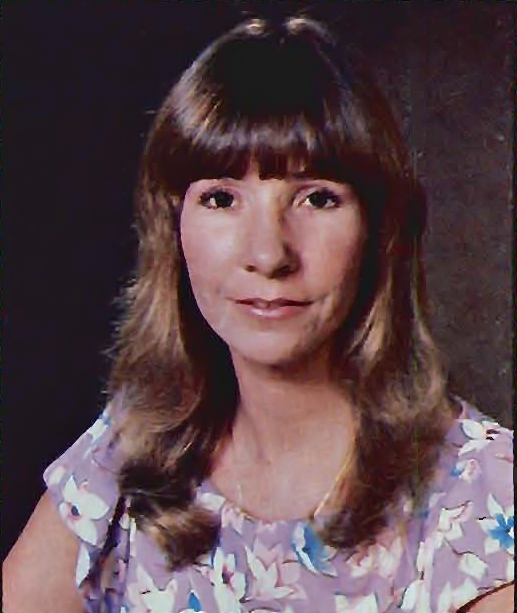
Roberta Williams, creator of the graphic adventure Mystery House and a significant designer of early adventure games.
Williams combined the graphics capabilities of the Apple II computer with the mechanics of a text adventure to produce the game Mystery House, which her husband used as the flagship game for what would become one of the most successful game publishing companies of the 1980s and 90, Sierra On-Line. The graphics for Mystery House were crude, but they were an early sign of the direction in which adventure games were headed.
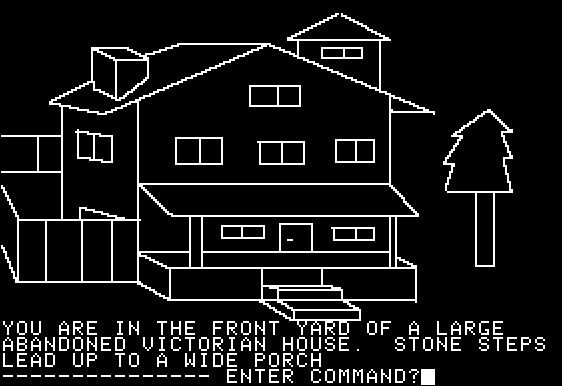
Mystery House: Crudely drawn, but a harbinger nonetheless.
By the mid-1980s, purely text adventures had fallen out of fashion in the commercial marketplace. The graphic capabilities of home computers had improved to the point where nobody wanted to play a game that involved reading words rather than looking at pictures. More advanced attempts than Mystery House were made to create text adventures that showed pictures at the top of the screen while text flashed by at the bottom, but this was only a stopgap measure until somebody came up with a better way of combining high-resolution images with the puzzle-solving interactivity that made adventure games so alluring.
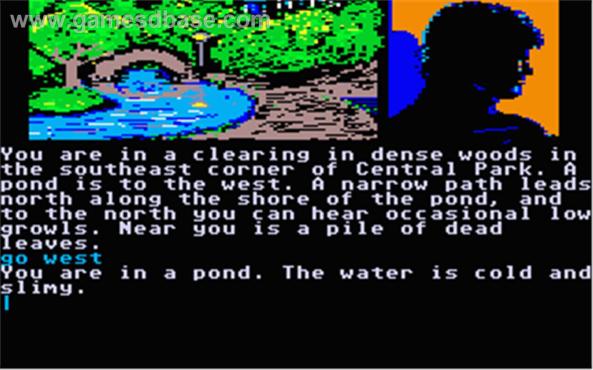
A text adventure with shifting graphic images at the top of the video display. Published by Telarium.
Text adventures never died, really. Nowadays they’re called interactive fiction and people still write them, primarily as a hobby but occasionally for commercial sale. To learn more, check out the Interactive Fiction Wiki to find out where you can download new games and collect tools that you can use to create your own. (I’ll write more about the current interactive fiction field in a later installment of this post.)
Even as the original Infocom games were thriving in the early 80s, though, the seeds for a radically new type of adventure game were being planted. Those seeds would take root at Sierra On-Line and the game designer who would bring them to fruition was the same person who created Mystery House: Roberta Williams.
I’ll talk about that in more detail in the second installment of this post.